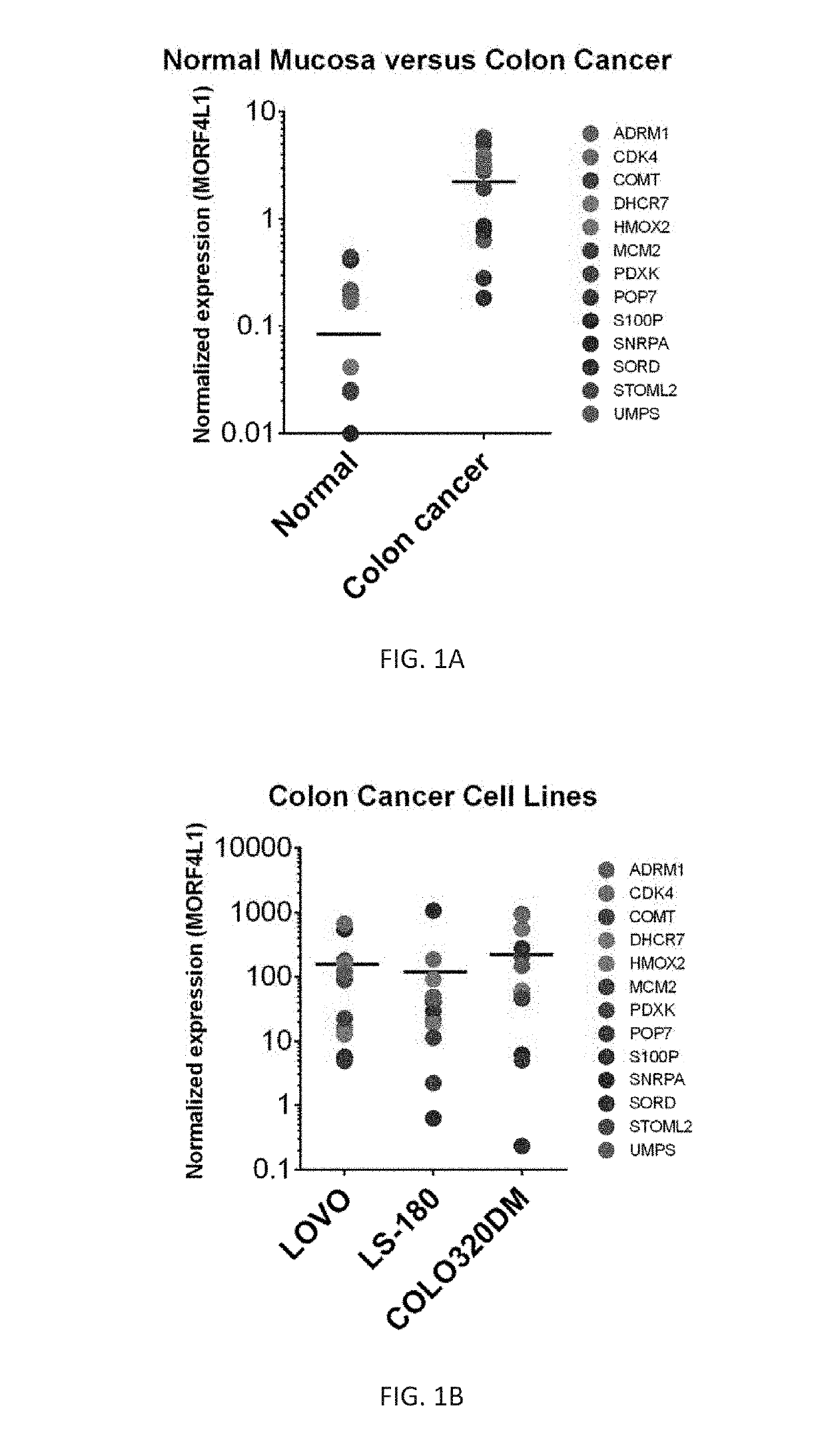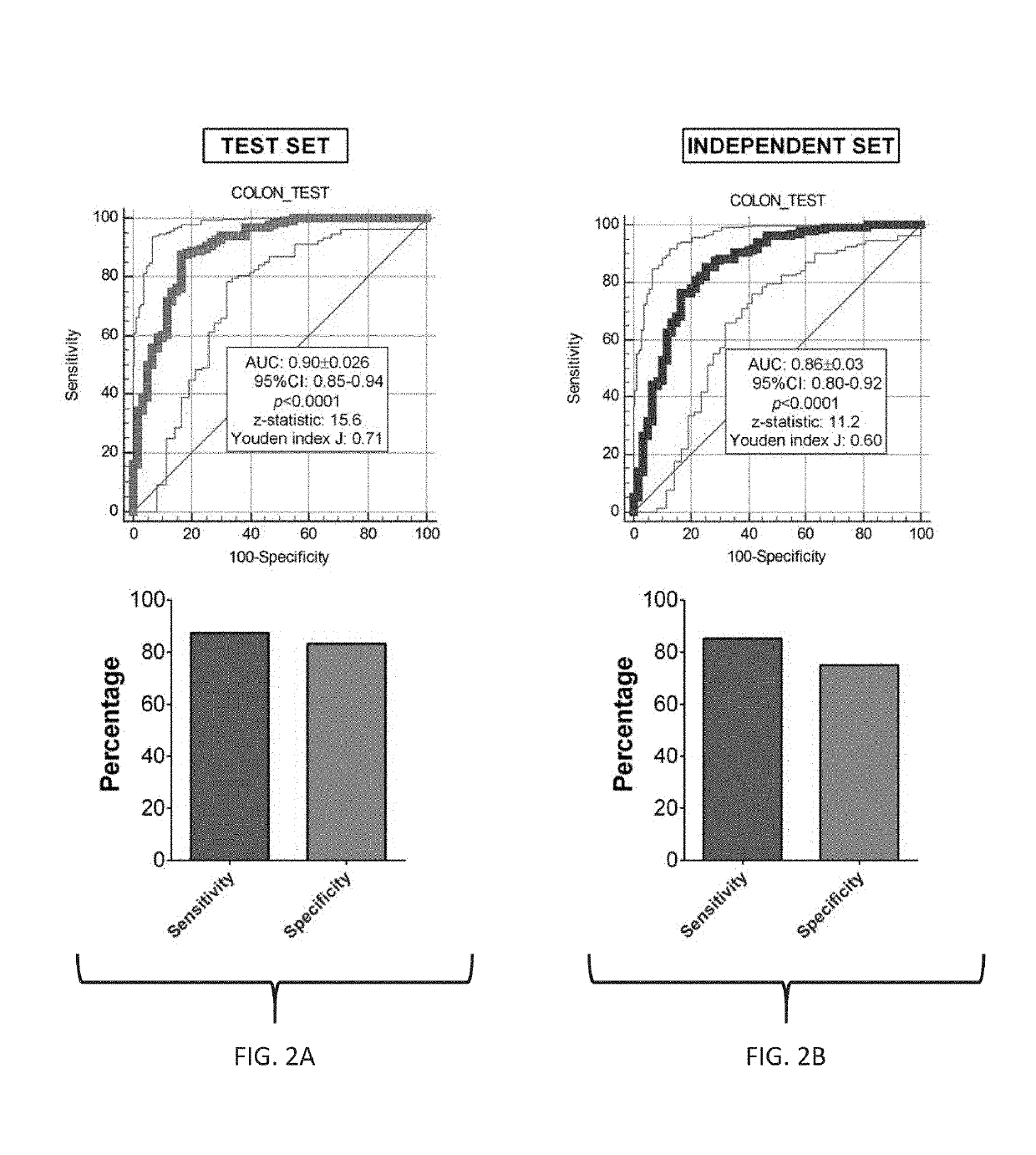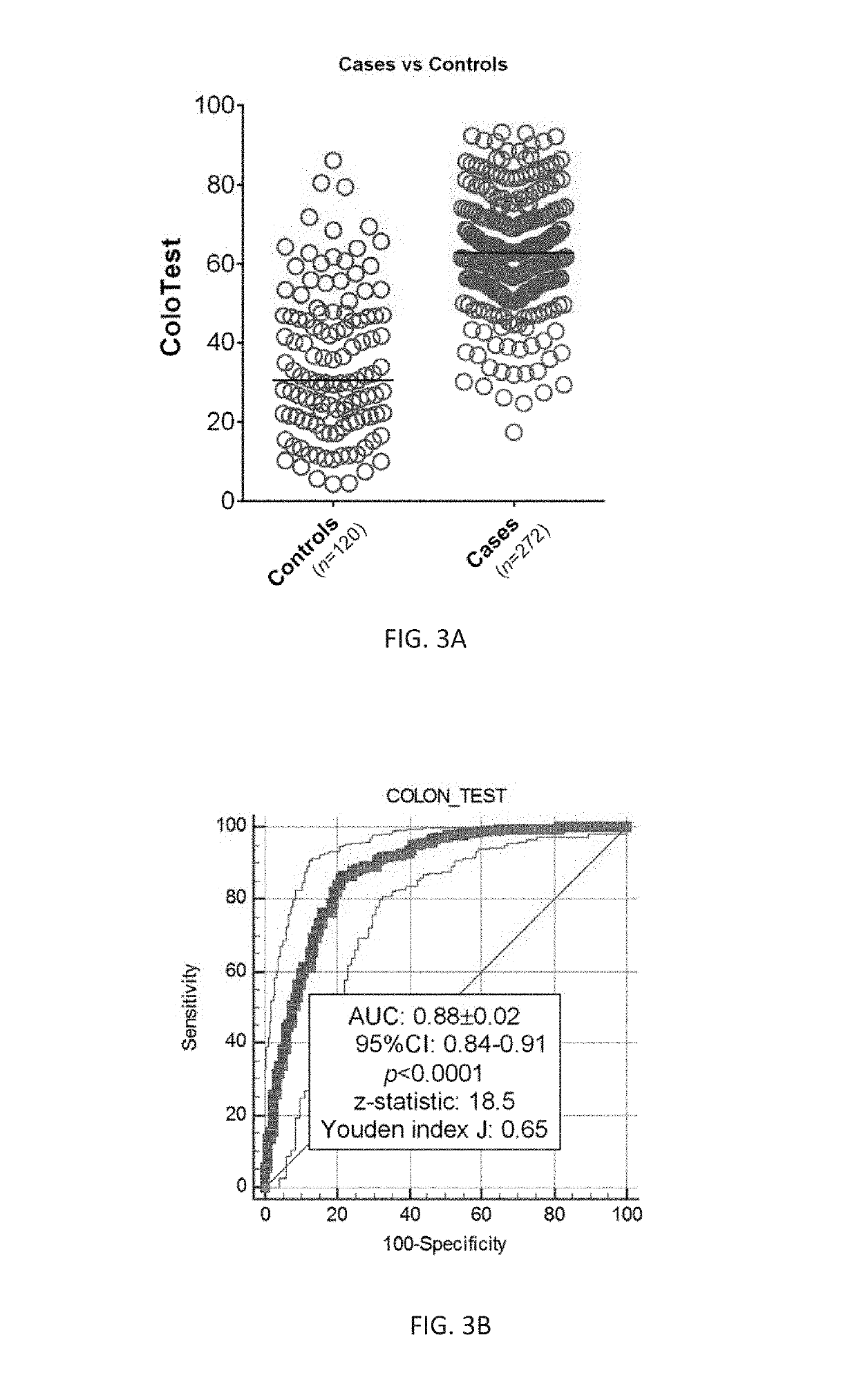Methods for colon cancer detection and treatment
a colon cancer and detection method technology, applied in the field of colon cancer detection, can solve the problems of poor sensitivity of current biomarkers, and significant limitations, and achieve the effect of predicting long-term outcomes in individual cases and limited significance of preoperative cea extrapolation
- Summary
- Abstract
- Description
- Claims
- Application Information
AI Technical Summary
Benefits of technology
Problems solved by technology
Method used
Image
Examples
example 1
n of a 13-Marker Gene Panel
[0135]Raw probe intensities from n=24 colon cancer tumor tissue samples were compared to n=22 control colon mucosa to identify genes that best discriminated between disease using the transcriptional profile of E-MTAB-57. Gene co-expression networks were generated to identify temporal patterns of gene regulation associated with colon cancer. A total of 513 nodes with 53,786 links were identified. Differential expression analysis identified 103 genes were upregulated in tumor tissue compared to blood. To identify blood-specific colon cancer gene biomarkers, we evaluated expression of the 103 genes in peripheral blood transcriptomes (n=7). Thirty-three (32%) of the 103 genes were below the level of detection in blood identifying these as candidate genes. Evaluation of transcripts in a preliminary dataset of blood samples from colon cancer (n=20) and matched normal blood (n=20) identified thirteen genes and one house-keeping gene as markers of colon cancer (Ta...
example 2
Utility
[0137]The data (receiver operator cuver analysis and metrics) for the utility of the test to differentiate patients with colon cancer (n=136) from controls (n=60) in the training and test sets are included in FIGS. 2A-2B. The score exhibited an area under the curve (AUC) of 0.90 (training) and 0.86 (test set). The metrics are: sensitivity: 85.3-87.5% and specificity: 75-83.3%.
[0138]Overall, ColoTest scores were significantly elevated in cancers (63±1%) and controls (34±2%) (FIGS. 3A-3B). The overall accuracy (training and test cohort) is 84%, with an AUC: 0.88. The z-statistic for differentiating controls was 18.5.
[0139]A decision curve analysis was used to quantify the clinical benefit of the diagnostic test (FIGS. 4A-4B). The ColoTest exhibited >50% standardized predictive benefit up to a risk threshold of 80%. The probit risk assessment plot identified a ColoTest score>50% was 75% accurate for predicting colon cancer in a blood sample. This was increased to >80% at a ColoT...
PUM
| Property | Measurement | Unit |
|---|---|---|
| Fraction | aaaaa | aaaaa |
| Fraction | aaaaa | aaaaa |
| Fraction | aaaaa | aaaaa |
Abstract
Description
Claims
Application Information
 Login to View More
Login to View More - R&D
- Intellectual Property
- Life Sciences
- Materials
- Tech Scout
- Unparalleled Data Quality
- Higher Quality Content
- 60% Fewer Hallucinations
Browse by: Latest US Patents, China's latest patents, Technical Efficacy Thesaurus, Application Domain, Technology Topic, Popular Technical Reports.
© 2025 PatSnap. All rights reserved.Legal|Privacy policy|Modern Slavery Act Transparency Statement|Sitemap|About US| Contact US: help@patsnap.com



